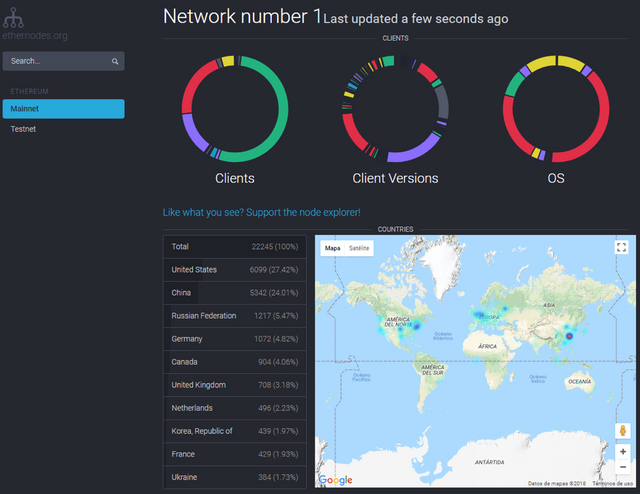Ethereum es una de las plataformas más populares para el desarrollo de smart contracts, como ya comentamos en el post anterior; pero, ¿sabes cómo conectarse a una red pública? ¿sabrías cómo crear nuestra propia cadena de bloques privada? En este post te lo explicamos.
Public Chains
Similar to Bitcoin, in the Ethereum ecosystem, there are many visual editors (or browsers) that help collect and analyze statistics from public access.
To know all the information that is being done in Ethereum you can consult Etherscan.io, where you can see the generated blocks, the transactions and contracts included, etc.
Normally, there are two types of Ethereum public networks:
Mainnet: used for production projects and smart contracts, and usually you need to invest some real money (converted to ether) to interact with it.
Testnet: it is used to make tests and there may be more than one, usually recreated periodically.
Another tool we have is Ethernodes.org, a browser that shows live information of the Ethereum network and its nodes. In the image you can see that the mainnet consists of about 22,000 nodes, 50% of which are in the US or China.
One way to connect to Ethereum is through a wallet or thin node, such as Ethereum Wallet. This allows you to connect to a public network, manage your accounts and your contracts. What it does not include is a distributed application browser (dApps). That would require a more complete version, called Mist.
When you run the Etherum Wallet software for the first time, it will try to connect to the Mainnet. Then, you can change to a testnet (Develop à Network) and start mining to get ether. If you run the private network ("Network only"), the Wallet software must automatically switch to it.
The ideal thing to do tests is to work with private networks (we'll see how to create one later) or with one of the public testents. Currently there are the following:
Ropsten: supports Geth and Parity nodes, and is the one that best reproduces the main blockchain.
Kovan: immune to spam attacks, but only supports Parity nodes.
Rinkeby: also immune to spam attacks, but only supports Geth.
Selecting one or the other depends on your needs or infrastructure, but the one that is having better reception lately and that we use internally for tests is Rinkeby since it is supported by the usual software (Geth, Mist and MetaMask). To get Ether and be able to work on it simply follow the steps in this link.
Source
https://blog.gft.com/es/2018/03/02/conectando-a-blockchain-como-crear-nuestra-propia-cadena-de-bloques-privada/
Congratulations @ppjose2001! You received a personal award!
You can view your badges on your Steem Board and compare to others on the Steem Ranking
Vote for @Steemitboard as a witness to get one more award and increased upvotes!
Downvoting a post can decrease pending rewards and make it less visible. Common reasons:
Submit